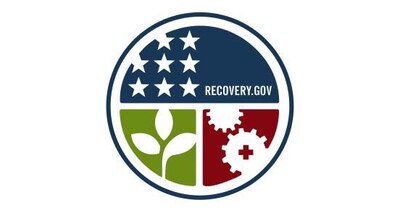State education officials Tuesday filed their application for $175 million in federal Race to the Top Funds.
The 193-page application pitched the state’s history of education reform measures, including the new educator effectiveness law, and it primarily requests money to implement those reforms.

“We’ve been committed to reforming Colorado’s education system in a way that gives students and educators every opportunity to succeed,” Gov. Bill Ritter said in a statement. “Our Phase 2 Race to the Top application focuses on reducing the dropout rate, closing the achievement gap and turning around low-performing schools so that every child gets the high-quality education they deserve.”
The bulk of the funds, if Colorado wins a grant, would be used for implementing new content standards and tests at the district level, creation of new educator evaluation systems, encouraging effective principals and teachers to work in low-performing schools and providing turnaround help for the state’s most struggling schools.
“We went back to the drawing board for our second application, but we didn’t wipe the slate clean,” education Commissioner Dwight Jones said. “We sharpened and focused our plans and worked to be more clear about our intentions for how the resources will be used. But our core plan remains intact — to improve the performance of all schools, for all students.”
The application retains many of the elements of the state’s unsuccessful first-round application and adds requests to help implement the educator effectiveness law (Senate Bill 10-191), which was passed late in the legislature session after Colorado lost its first bid.

“Recent bipartisan approval of a law to improve educator effectiveness and the announcement that Colorado will receive a major federal grant to improve its education data systems gives us reason to believe a number of key pieces are falling into place,” said Bob Schaffer, R-4th District and chair of the State Board of Education. “Winning Race to the Top will further boost our work, and we are optimistic about our chances this time around.” (The state recently received a separate, $17.4 million data-systems grant.)
About $90 million of the $175 million would go directly to participating districts, as the program requires at least half the funds go to local education agencies.
The department has signed memoranda of understanding (formal agreements to participate) with 114 districts and other education agencies, 64 percent of the 180 in the state. Those districts include 89.9 percent of the state’s students, 84 percent of schools and 91 percent of poor students. For the first round application the state had agreements with districts including about 95 percent of the state’s students. The only two notable non-participants in round two are the Pueblo County and St. Vrain districts.
The Colorado Education Association participated in round one but boycotted round two because of SB 10-191. The Colorado unit of the American Federation of Teachers, which represents primarily the Douglas County Schools, signed on to round two.
In broad terms, the state’s application focuses on these goals:
- Increase student learning through teacher mastery and delivery of common standards and assessments.
- Use, learn and leverage high quality information to drive increased student performance.
- Ensure all students have access to effective teachers and principals.
- Turn around persistently lowest-achieving schools.
- Build a statewide system of accountability and support to accomplish and sustain those goals.
Colorado’s application promises, over time, to increase:
- College enrollment from 62.9 to 70 percent
- College retention from 66.3 to 75 percent
- 4th grade National Assessment of Education Progress math proficiency from 45 to 55 percent
- Higher school graduation rate from 74.6 percent to 90 percent
- 4th grade NAEP reading proficiency from 40 to 60 percent
- 8th grade math NAEP proficiency from 40 to 60 percent
- 8th grade reading NAEP proficiency from 32 to 52 percent
- Overall CSAP math proficiency from 54.5 to 85 percent
- Overall CSAP reading proficiency from 68.3 to 85 percent
- Reduce the achievement gap among all subgroups from 30 to 10 percent
Here’s a breakdown of how the application proposes to spend the $175 million if Colorado wins that amount:
- $13.6 million – Statewide implementation and administrative costs, primarily at the state Department of Education.
- $13 million – Funding the Content Collaboratives and Regional Support Teams that will roll out new content standards and assessments to school districts, creation of an instructional improvement system on the department’s SchoolView website and extra support for small and rural districts.
- $5.8 million – Subsidies and incentives for district to create and share curricula, for purchase of formative and interim tests and state review of available interim tests.
- $15.2 million – Build out and support of an expanded SchoolView system, including teacher, principal and administrator portals; expansion of Colorado Growth Model data, and incentives for effective educators to provide instructional materials.
- $8 million – Money for state personnel and outside consultants to help districts develop and implement new educator evaluations systems and to identify measures of educator effectiveness, especially in currently untested grades and subjects.
- $5.1 million – Funding for the State Council for Educator Effectiveness and for districts to implement evaluation systems.
- $4.1 million – Development of effective teachers and principals with a focus on low-performing schools, including residency programs, increased national board certification and hiring of Teach for America members.
- $4.3 million – Expansion of the department’s School Leadership Academy, which will include a Turnaround Leaders Academy.
- $3.2 million – Expansion of the number of students who take Advanced Placement and of the number of under-represented students who take college-prep classes.
- $884,000 – Funding for the department’s existing dropout prevention and student re-engagement program.
- $11 million – Creation of a school Turnaround and Intervention Unit within CDE to help districts conduct successful turnarounds of low-performing schools.
- $90.3 million – The funds that will go directly to participating schools districts and other local education agencies.
Thirty-five states and the District of Columbia applied for round two. An undetermined number of finalists will be named in late July and will be invited to make in-person presentations in early August. States will have different reviewers than they did in round one.
Winners will be announced in early September. Between $3 and $4 billion is available, and there are different tiers of possible award amounts based on state populations. Colorado’s ceiling was $175 million.
Colorado asked for $377 million in the first round and was selected as one of 16 semi-finalists but the only winners were Tennessee and Delaware. An award can be spent over four budget years. Colorado spends roughly $5.5 billion a year in state and local operating funds on K-12 education.
- Do your homework
Related Education News Colorado stories - NYT: States adopt flurry of legislation ahead of R2T
- Stateline.org: Who’s in, who’s out of second round
- Full application (PDF)
- Appendices, including list of participating districts and budget details (large PDF)
Watch for continuing EdNews coverage in the near future of Colorado’s R2T bid.
